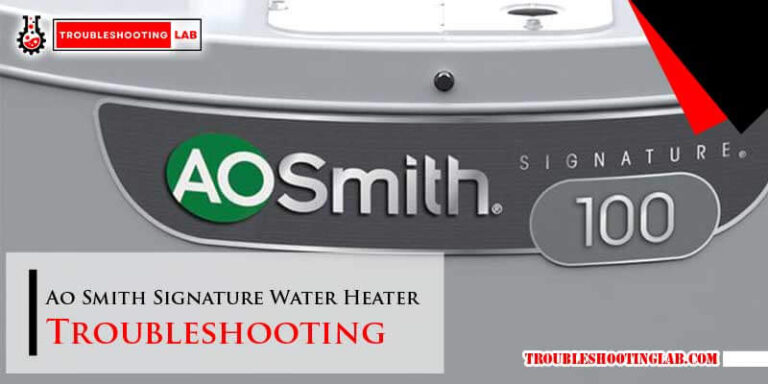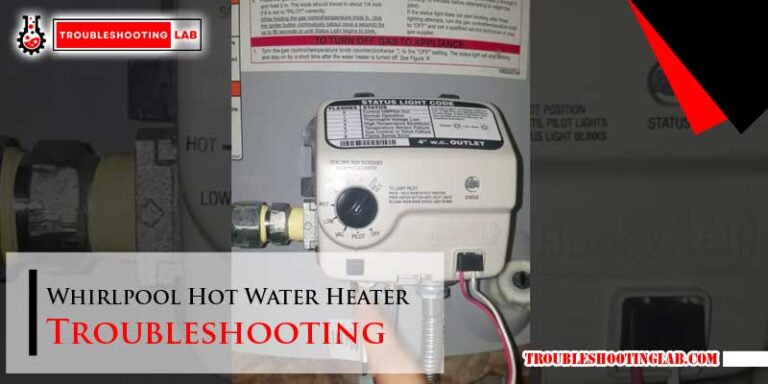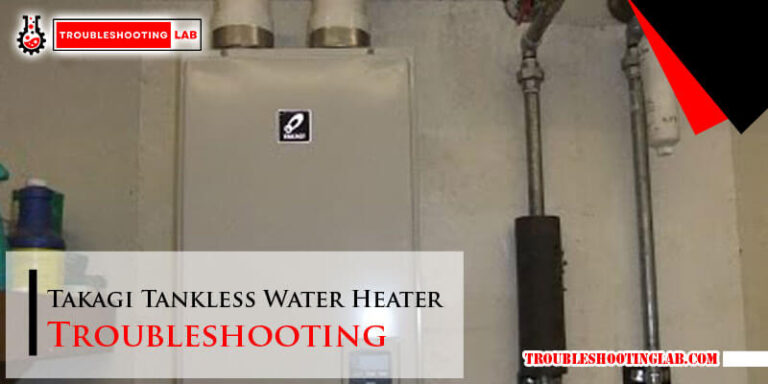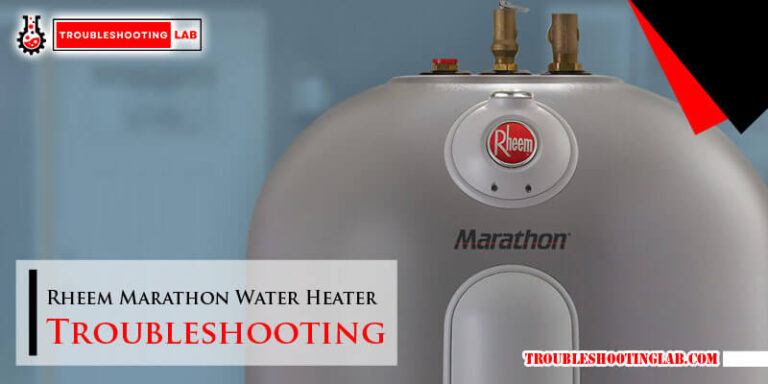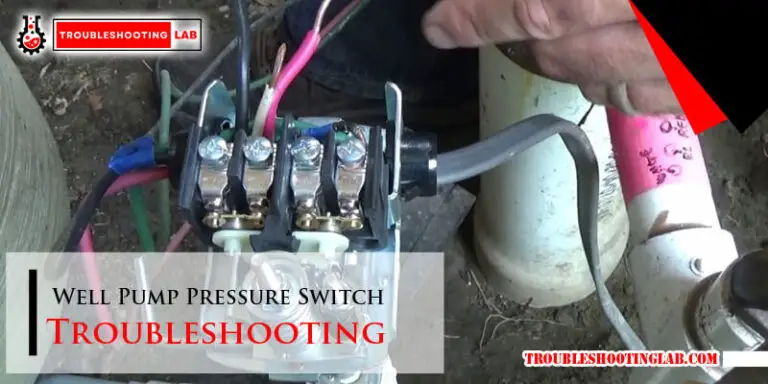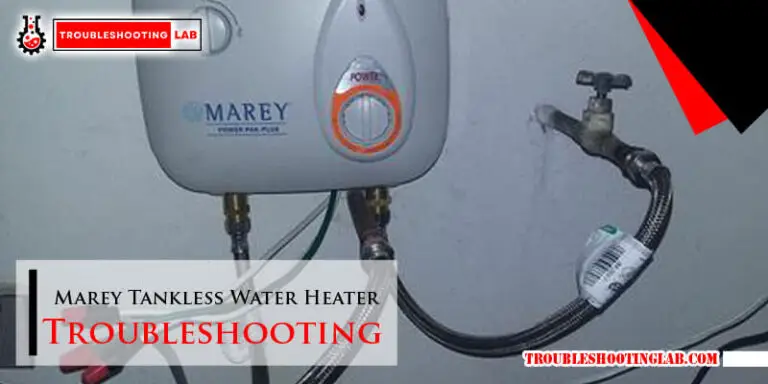Motorhome Hot Water Heater Troubleshooting: Quick Fixes
Troubleshooting a motorhome hot water heater begins with checking the pilot light and power supply. Ensure the thermostat is set correctly and the water tank isn't leaking.Embarking on a motorhome adventure promises the comfort of home on the open road, but a malfunctioning hot water heater can quickly dampen spirits. A cozy shower at the end of a long day of exploration turns into an unexpected challenge when you’re met with cold water.
Being prepared to tackle common issues with your motorhome’s hot water heater is essential for any road warrior. Before seeking professional help, simple troubleshooting steps can often resolve basic problems, such as inspecting for gas supply issues or electrical faults. Knowledge of your motorhome’s water heater system and regular maintenance can prevent interruptions in your hot water supply, ensuring your travels remain as relaxing and enjoyable as planned.
Introduction To Motorhome Hot Water Heaters
Imagine a perfect road trip in your motorhome. The scenery is breathtaking. You’ve parked beside a serene lake. Now, you want a hot shower. But wait, no hot water? Let’s fix that. This section will guide you through motorhome hot water heater troubleshooting.
The Role Of Hot Water In Motorhomes
Hot water is essential in motorhomes. It powers your showers, kitchen needs, and comfort. Without it, motorhome living gets tough. We rely on it for daily tasks. This is why a working hot water heater is a must.
Common Types Of Motorhome Water Heaters
- Storage Water Heaters: These come with a tank. They store and heat water continuously.
- Tankless Water Heaters: These heat water on demand. They save space and energy.
- Motor-Aid Water Heaters: These use engine heat. They heat water as you drive.

Identifying Common Water Heater Issues
Traveling in a motorhome is fun. Yet, sometimes things can go wrong. Like with your hot water heater. Knowing how to fix it is important. Let’s talk about common water heater issues.
No Hot Water Output
Imagine wanting a warm shower, but the water is cold. Frustrating, right? Let’s see why this happens. Often, the problem is simple.
- Check the gas supply – Make sure it’s on.
- Look at the pilot light – It should be lit.
- Examine the thermostat – It might be set too low.
If these steps don’t work, the heating element might need a change.
Inconsistent Water Temperatures
Sometimes, water temperature jumps from hot to cold. Not nice, right? Here are some quick checks:
- Water tank size – Maybe it’s too small.
- Check the thermostat – It might not work right.
- Look for water leaks – They can cause temperature drops.
Fixing these can give you steady hot water again.
Initial Troubleshooting Steps
When your motorhome hot water heater falters, initial troubleshooting steps are crucial. They help you pinpoint the issue quickly. The goal is to restore hot water without delay. Let’s explore these vital first steps.
Safety First: Precautions To Take
Before diving into troubleshooting, safety is paramount. Follow these guidelines:
- Turn off the power supply to the heater.
- Allow the unit to cool down if it was in use.
- Ensure the area is well-ventilated.
- Wear protective gloves to avoid burns or shocks.
Basic Inspection: What To Look For
A basic inspection can reveal common issues. Look for these signs:
- Check for leaks around the heater.
- Inspect electrical connections for corrosion.
- Examine the anode rod for excessive wear.
- Assess the burner for obstructions or dirt.
- Observe the pilot light, if applicable.
Spotting these early signs can prevent bigger problems. Tackle them promptly for a quick fix.
Pilot Light Problems
Motorhome adventures can hit a snag when hot water issues arise. The pilot light, a small flame that ignites the main burner, is often the culprit. Understanding common pilot light problems ensures comfort on the road.
Relighting The Pilot Light
Relighting a pilot light is a simple process. Follow these steps for a quick fix:
- Ensure the gas supply is on.
- Access the water heater’s pilot light valve.
- Turn the knob to ‘pilot’ setting.
- Press down on the knob to start gas flow.
- Use a long lighter to ignite the pilot.
- Check for a blue flame, indicating success.
If the light does not ignite, repeat the steps. Ensure proper ventilation for safety.
When The Pilot Light Won’t Stay Lit
A pilot light that won’t stay lit poses a challenge. Consider these factors:
- Thermocouple issues: A faulty thermocouple might need cleaning or replacing.
- Drafts: Wind can blow the pilot light out. Check for drafts near the heater.
- Gas valve problems: A defective valve prevents gas from reaching the pilot light.
Regular maintenance prevents these issues. Seek professional help if problems persist.
Electric Water Heater Elements
Traveling in a motorhome means comfort on the go. But, electric water heater problems can dampen this experience. Understanding the electric water heater elements is key. Let’s dive into troubleshooting these elements.
Checking The Electrical Circuit
First, ensure your motorhome is connected to a power source. Next, check the electrical circuit of your water heater. This step is crucial for safety and function. Follow these steps:
- Turn off the power supply to the water heater.
- Locate the circuit breaker and check if it has tripped.
- Reset the circuit breaker if necessary.
- Use a multimeter to test the voltage at the heater’s input. Ensure it matches your motorhome’s specifications.
If the circuit is fine but the water remains cold, the issue might be with the heating elements.
Replacing Faulty Heating Elements
Heating elements can fail over time. Replacing them is straightforward. Here’s how:
- Disconnect the power supply to avoid electric shocks.
- Drain the water heater tank using the valve at the bottom.
- Remove the access panel on the side of the water heater.
- Detach the wires connected to the faulty heating element.
- Use a heating element wrench to unscrew the old element.
- Install the new element and reattach the wires.
- Refill the tank before turning the power back on.
This process ensures your water heater works efficiently. Regular checks on the electrical circuit and heating elements prevent future issues.
Gas Water Heater Concerns
Enjoying warm water in your motorhome is bliss, especially after a day of adventure. But sometimes, your gas water heater may not work as expected. Troubleshooting is key to getting back to comfort. Let’s explore common gas water heater issues and how to fix them.
Adjusting The Gas Pressure
Correct gas pressure is vital for your water heater to function properly. Low pressure can cause inadequate heating. High pressure can be dangerous.
To adjust the gas pressure, follow these steps:
- Locate the pressure regulator on your heater.
- Use a manometer to check the pressure.
- Adjust the regulator knob to achieve the correct level.
- Re-check pressure to ensure it’s within safe limits.
Always refer to the manufacturer’s guide for specific pressure requirements.
Cleaning The Burner Assembly
A clean burner assembly ensures efficient operation. Dirt and debris can block the gas flow, causing malfunctions.
Steps to clean the burner assembly:
- Turn off the gas supply and let the heater cool down.
- Remove the burner assembly cover.
- Take out the burner and brush off any dirt.
- Use compressed air to blow through the burner tubes.
- Reassemble and test the burner for proper flame.
Cleaning should be part of regular maintenance.
Thermostat And Pressure Relief Valve
Motorhomes offer the comfort of home on the road. This comfort extends to hot water for showers and dishes. A key component in providing this is the water heater. Two critical parts ensure hot water flows safely: the thermostat and the pressure relief valve.
Testing The Thermostat
Water temperature consistency is crucial for comfort and safety. The thermostat controls this. If water is too cold or too hot, the thermostat might need testing.
Follow these steps to test:
- Switch off the heater and disconnect power.
- Remove the access panel to expose the thermostat.
- Use a multimeter to check for continuity.
- If the reading is off, replace the thermostat.
Ensuring Proper Pressure Relief Valve Function
The pressure relief valve is a safety feature. It prevents excessive pressure build-up. This valve needs regular checks to ensure proper function.
Steps for valve maintenance:
- Lift the valve handle to release water.
- Watch for a steady flow.
- If water drips or leaks, valve replacement might be needed.
Regular checks keep the motorhome water heater safe and efficient.
Maintenance Tips For Longevity
Keeping your motorhome’s hot water heater in top condition means more than just repair skills. A strict maintenance routine can extend its life significantly. We’ll dive into practices that can help.
Regular Cleaning Routines
Regular cleaning prevents build-up and wear. It ensures smooth operation. Drain and flush the tank every six months to remove sediment. This is crucial for performance.
Check the anode rod yearly. Replace it if more than half worn. The anode rod protects by attracting corrosive elements. Keeping it fresh is vital for tank longevity.
Inspect seals and valves for leaks. Tighten connections as needed. Leaks can lead to serious damage if ignored. Prompt action keeps your system healthy.
Seasonal Maintenance Advice
Before winter, winterize your water heater. Drain the system to prevent freezing. Freezing can cause cracks and leaks.
Use non-toxic antifreeze in the plumbing system. It helps prevent freezing damage. Always follow the manufacturer’s guidelines.
Come spring, de-winterize with care. Flush out antifreeze thoroughly. Ensure the system is clean for use. Regular inspection after each season keeps issues at bay.
Maintain air flow around the heater exterior. Blockages can cause overheating. Ensure vents are clear at all times. Good air flow prevents many common issues.
When To Call A Professional
Trips in your motorhome mean freedom, adventure, and… sometimes, troubleshooting appliances. The hot water heater is essential for comfort. Yet, DIY fixes have limits. Knowing when to call a professional can save time, money, and prevent damage.
Understanding The Limits Of Diy
Motorhome owners often tackle repairs. It’s part of the journey. But water heaters are complex. They mix electricity, gas, and water. This trio demands respect and caution. Here’s when to step back:
- No hot water after basic checks.
- Leaks you can’t trace or fix.
- Electrical issues, like breaker trips.
- Gas smells or soot buildup.
Finding Qualified Service Technicians
When DIY ends, find pros with skills. Here’s how:
- Check certifications for RV systems.
- Seek recommendations from other RVers.
- Use online reviews to gauge reputation.
- Confirm they offer a warranty on work.
Calling a pro means peace of mind. They get your water heater running safely. You get back to enjoying your adventure.

Frequently Asked Questions
Why Isn’t My Motorhome Water Heater Working?
Possible causes include a tripped circuit breaker, empty propane tank, faulty thermostat, or a malfunctioning heating element. Check these components systematically.
How To Reset A Motorhome Water Heater?
Locate the water heater’s reset button, typically inside the exterior cover. Press it firmly until you hear a click, indicating the reset is complete.
What Causes Water Heater Leaks In Motorhomes?
Leaks can originate from loose connections, corroded tank linings, or damaged pressure relief valves. Regular maintenance can help prevent these issues.
Can I Fix A Motorhome Heater Myself?
Many issues, like pilot light problems or clogged burners, can be fixed with basic knowledge and tools. Always consult your owner’s manual before attempting repairs.
How Often Should I Service My Motorhome Heater?
Annual servicing is recommended to ensure efficient operation, prevent breakdowns, and extend the lifespan of your motorhome water heater.
Conclusion
Navigating through the intricacies of hot water heater issues doesn’t have to be daunting. With the right approach, identifying and fixing common problems can be straightforward. Remember, regular maintenance is key to avoiding future headaches. For those unexpected troubles, our guide provides a reliable starting point.
Safe travels and warm showers await on your adventures.

